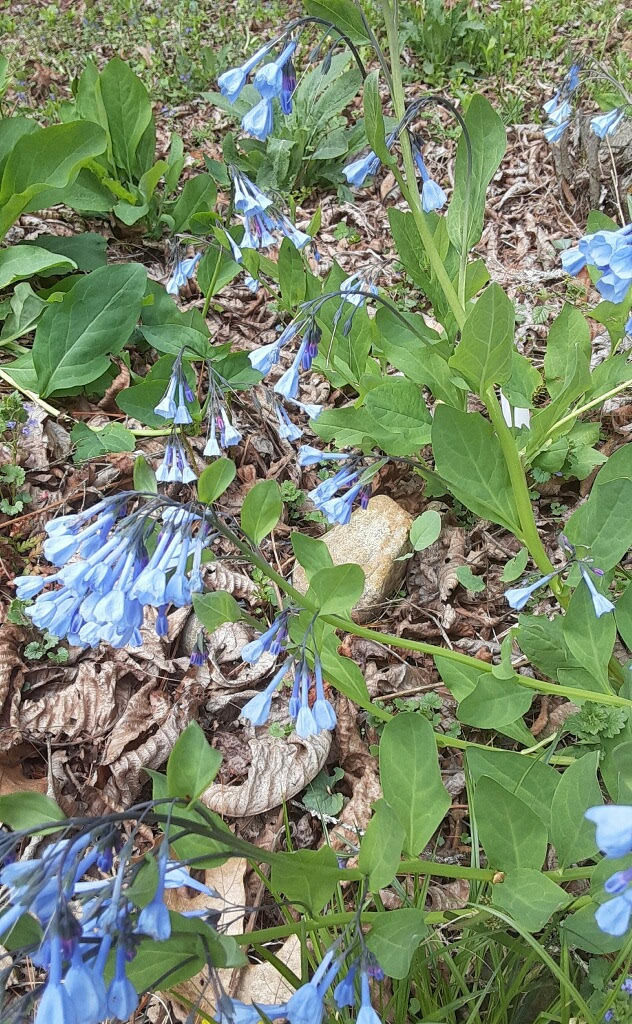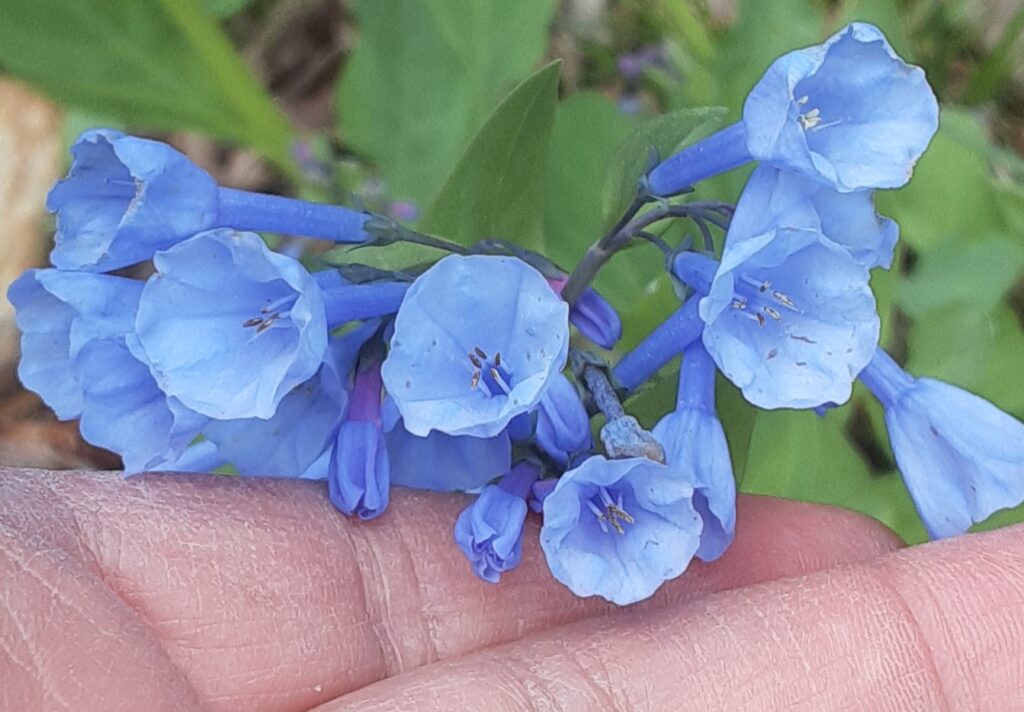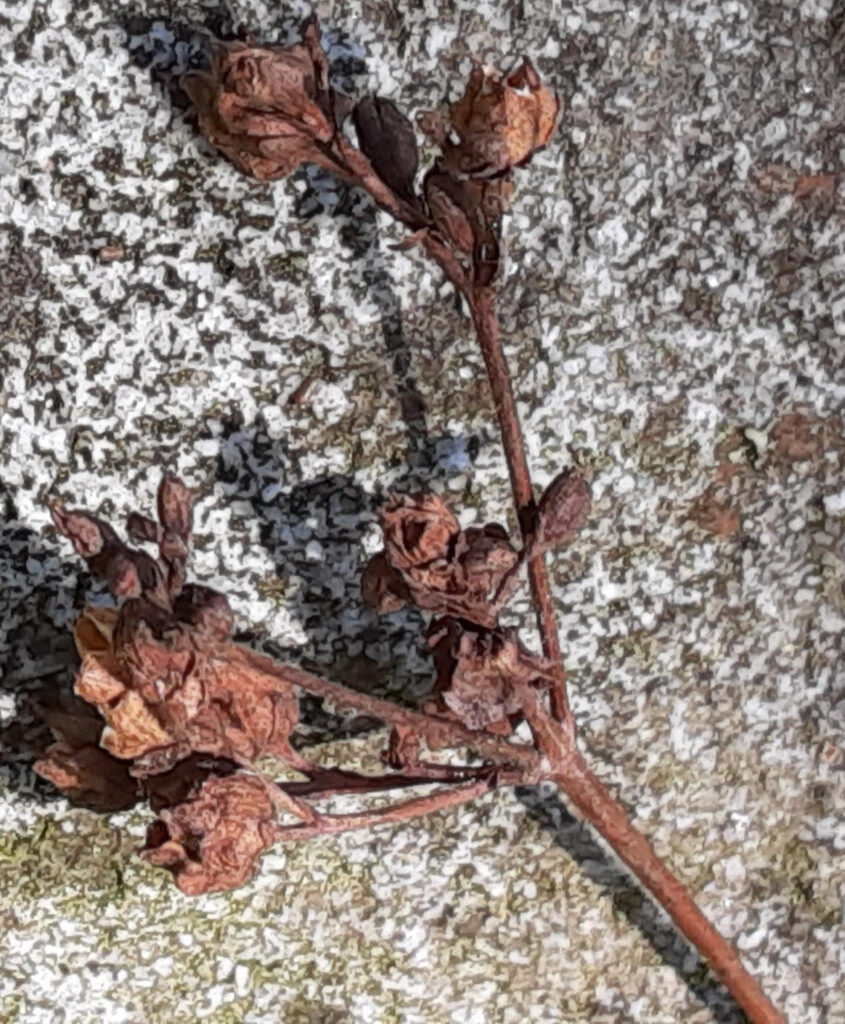By Susan Sprout
Virginia Bluebells, or Virginia Cowslips, are ephemeral – here in the spring and gone during summer. Look for them blooming now with nodding but showy, blue trumpet-shaped flowers. They arrive early, eager for the higher amounts of unhampered sunlight before the trees above them leaf out to block it. As the name suggests, their bright blue flowers hang in loose clusters like bells, their trumpets shaped by the fusing of five petals. The buds, which usually start out pink, bloom blue. They grow quickly to their eight-to-twenty-four-inch height before dying back and reverting to just underground parts. Considered dormant because they are not photosynthesizing, I will bet the woody roots that we do not see are still busy getting nutrients and water during the summer and fall. With all of their stored resources, they are ready to go when it is spring!

Virginia Bluebells have oval leaves ranging in length from two inches at the top of the plant where they almost clasp on to the stem, then downward to the lower parts where they are eight inches long and tapered. Situated alternately on the stems, the leaves do not shade each other out – more sun for all. Another reason they can grow upwards in such a hurry. Seeds develop at the base of the flowers after they are pollinated by bees, especially bumblebees that look for pollen and nectar early in spring. The bumpy, roundish seed pod turns from green to tan to brown as it and the four seeds in each one mature.

These native perennials tend to grow in masses when water is near, in bottom lands and riverwoods, where the soil is rich and the land occasionally gets flooded. Once established, they will bloom year after year. Their seedlings will flower in their second year. They can be found from E. Canada south to North Carolina and west to Arkansas and Minnesota (lots of lakes there for bluebells to grow near). The native people in those areas used the plant as a treatment for tuberculosis and whooping cough. And, guess what? Deer do not like to eat it!


